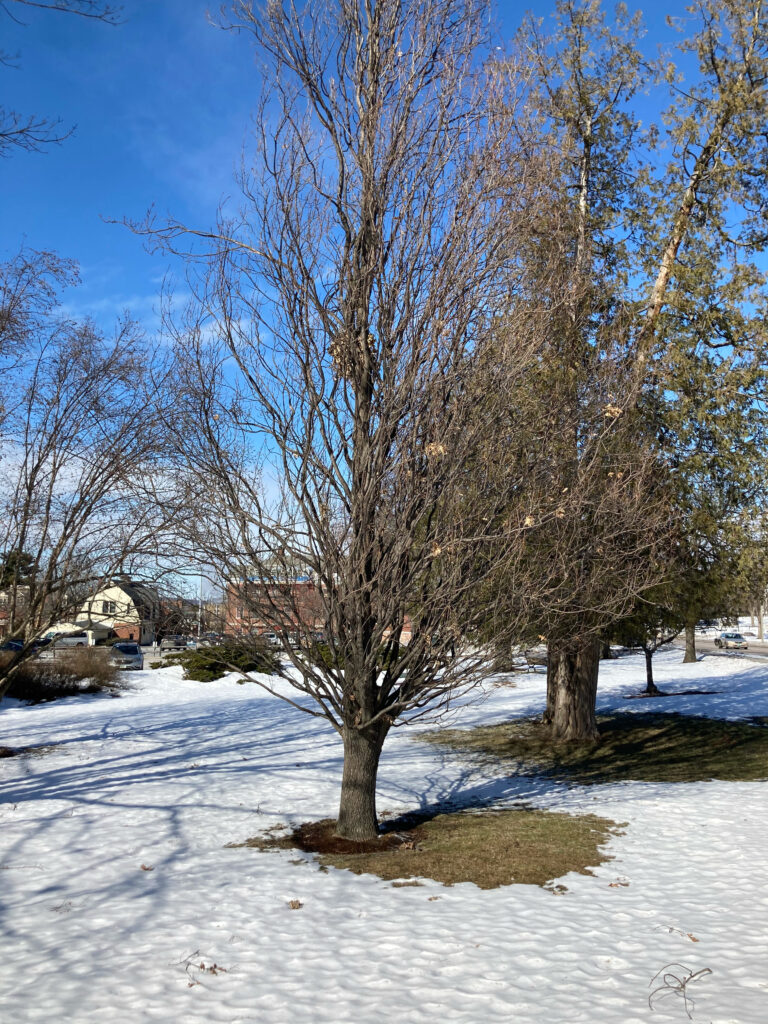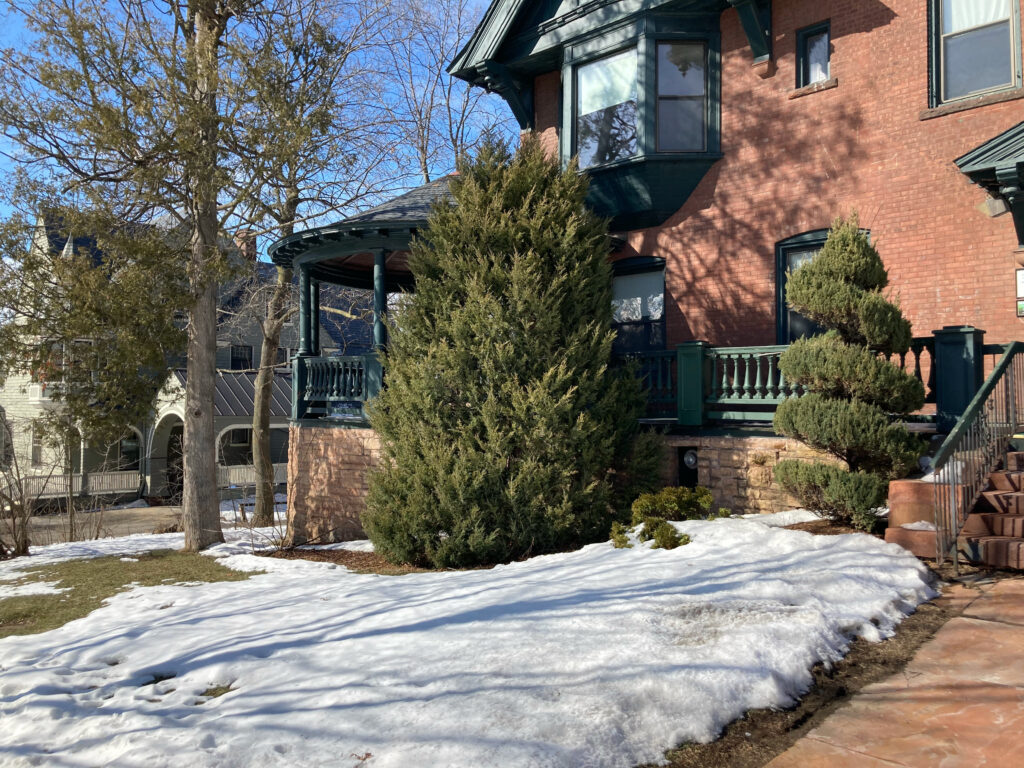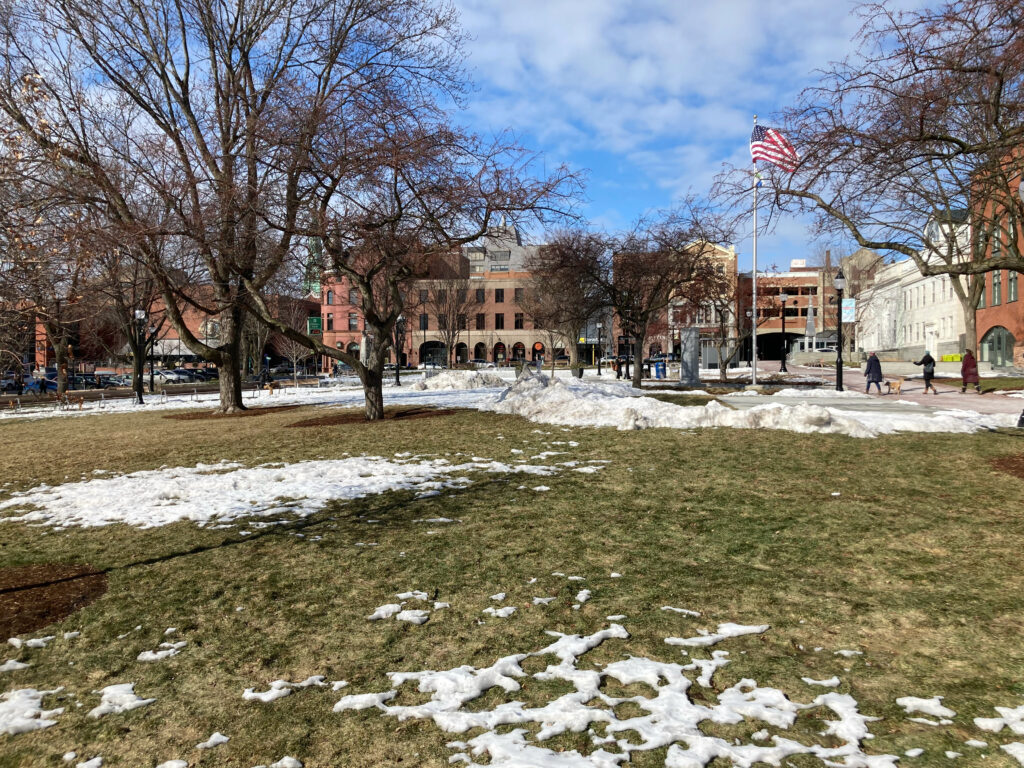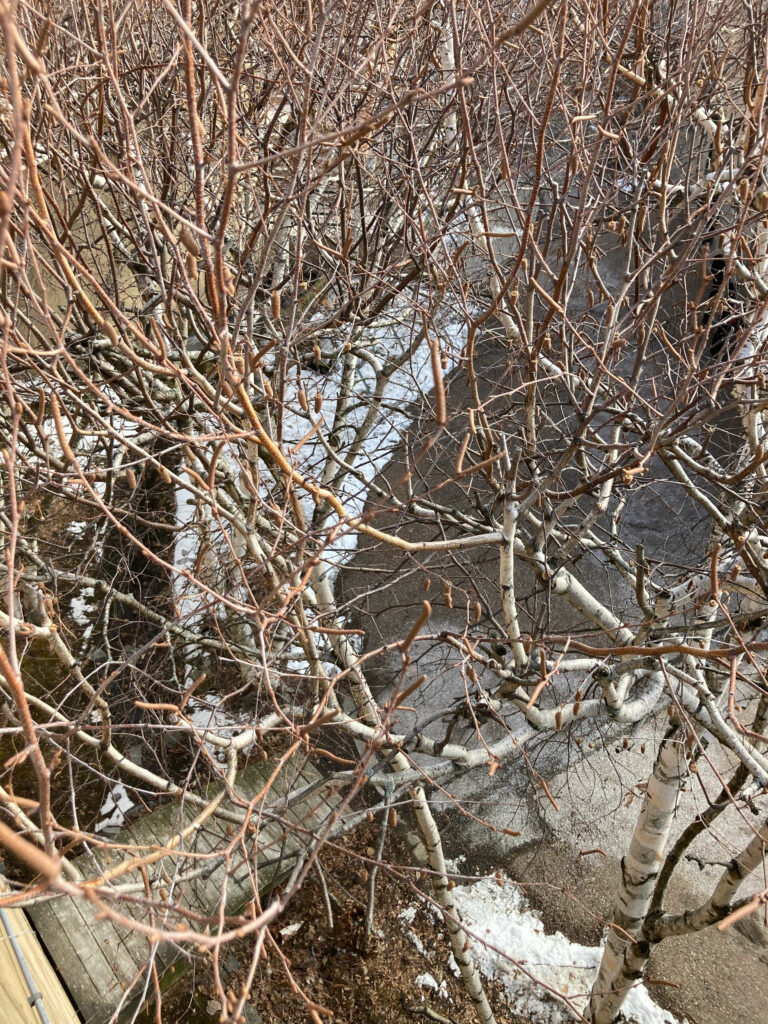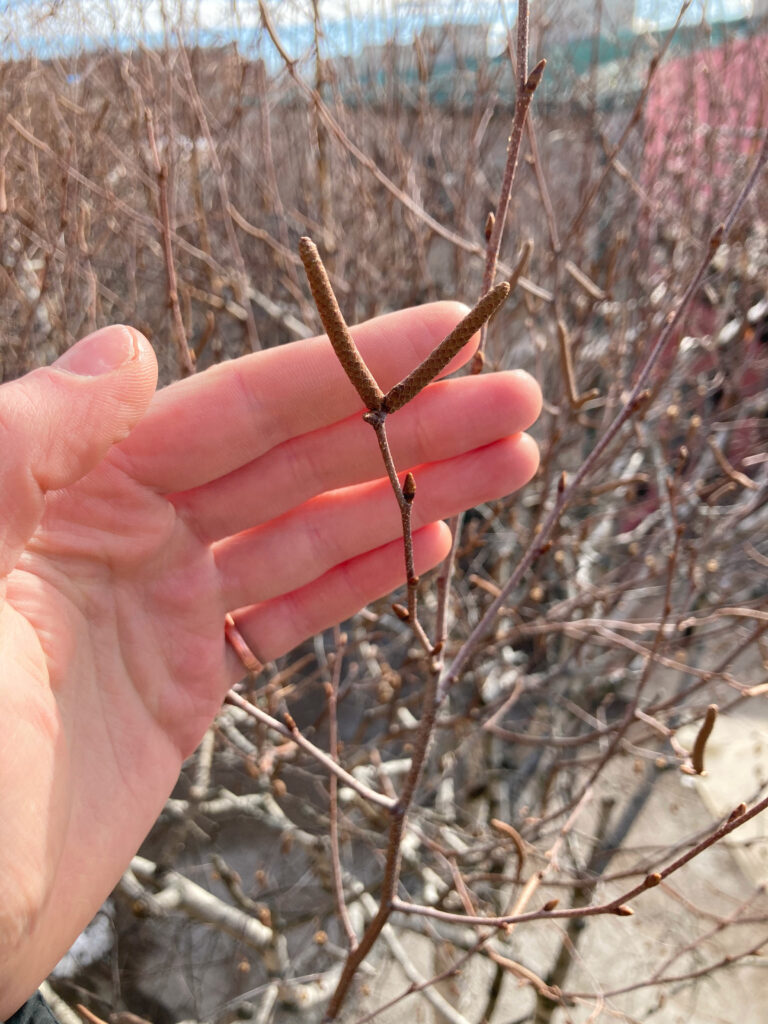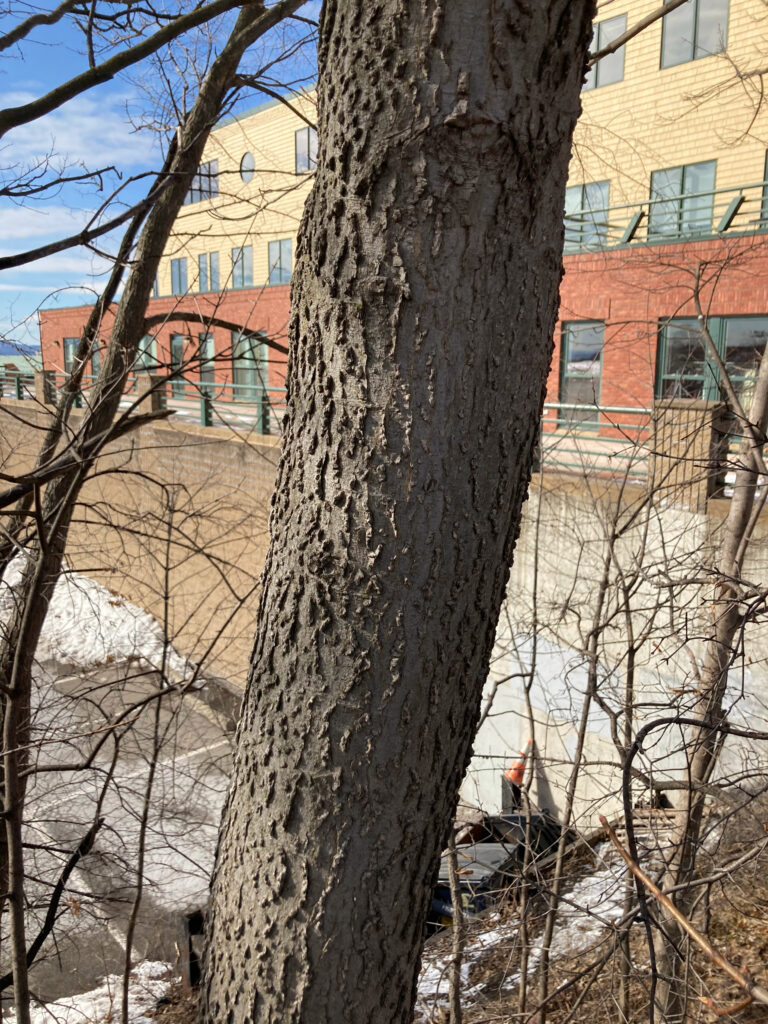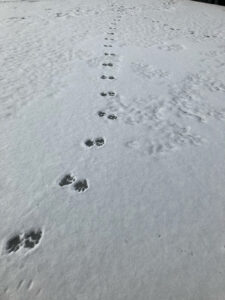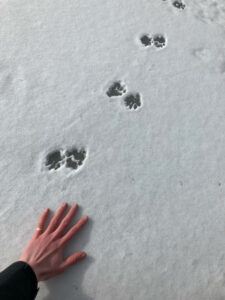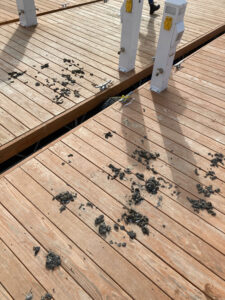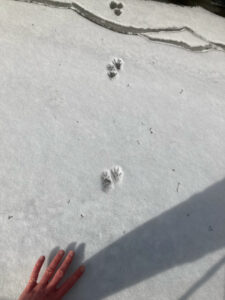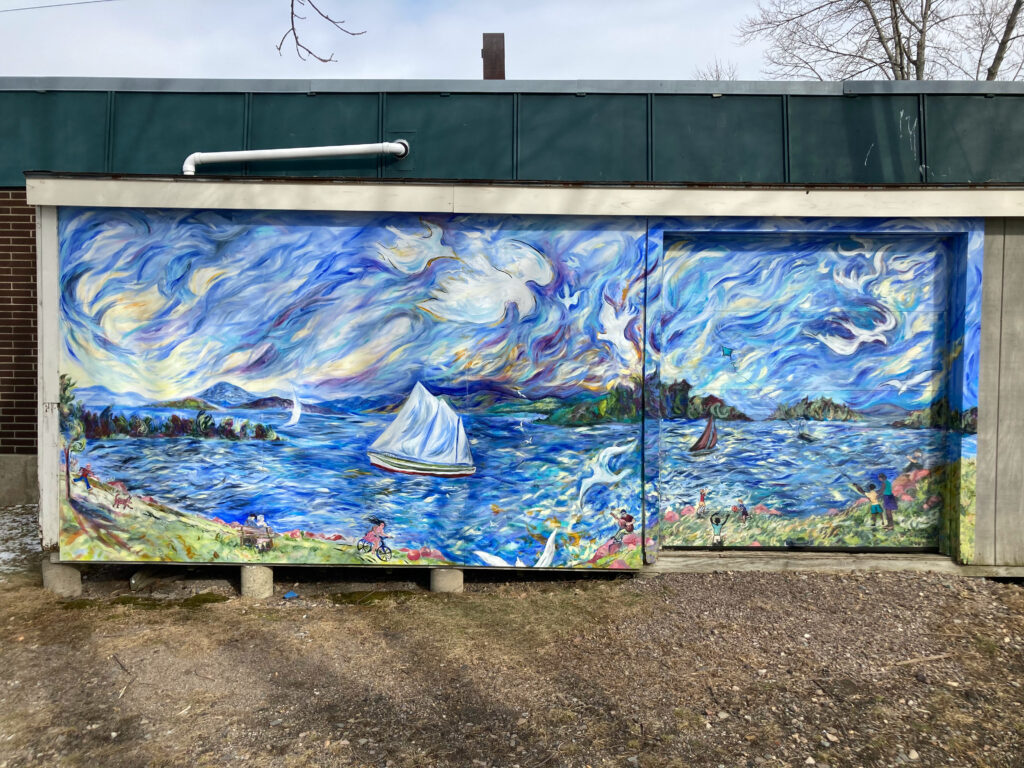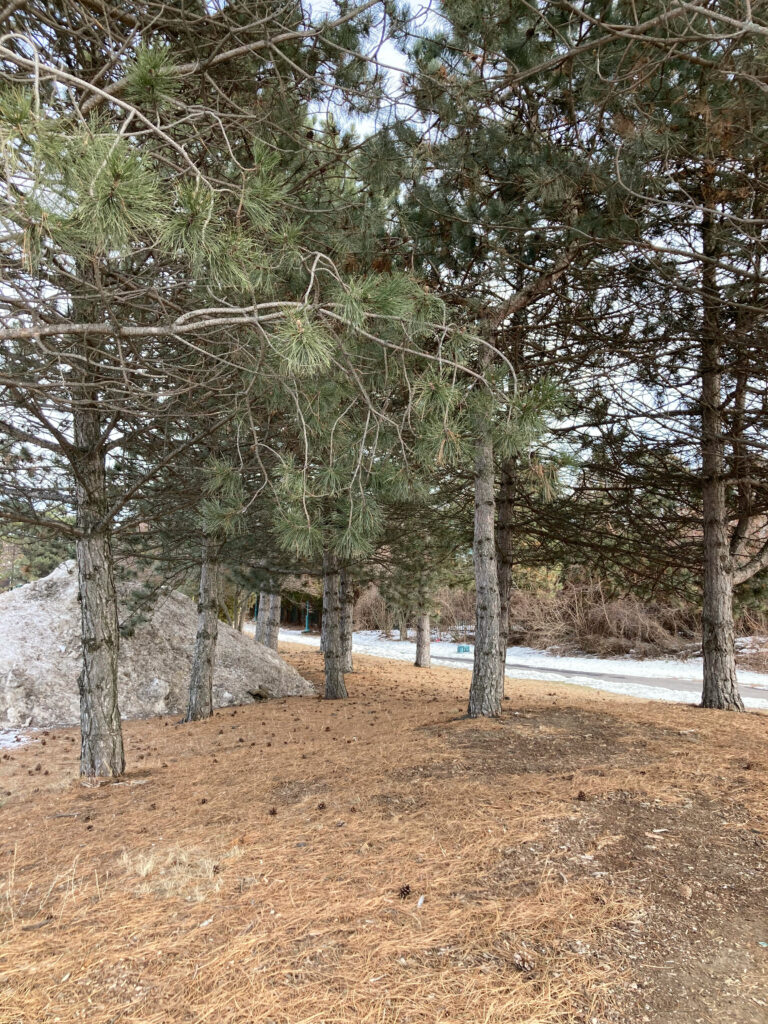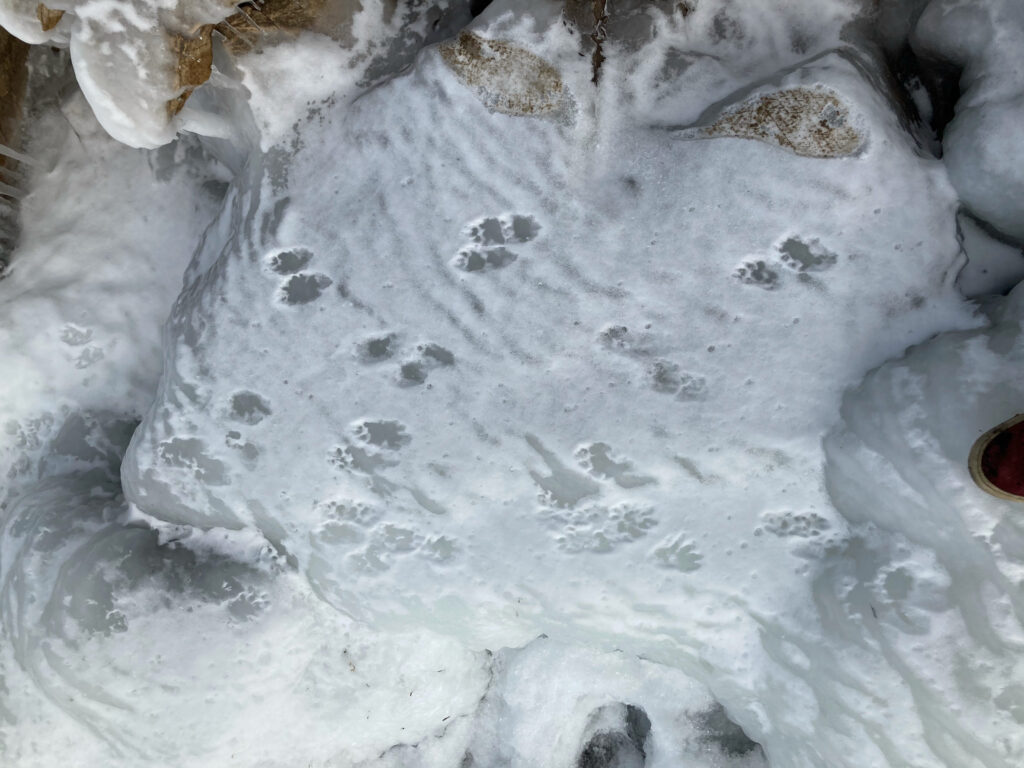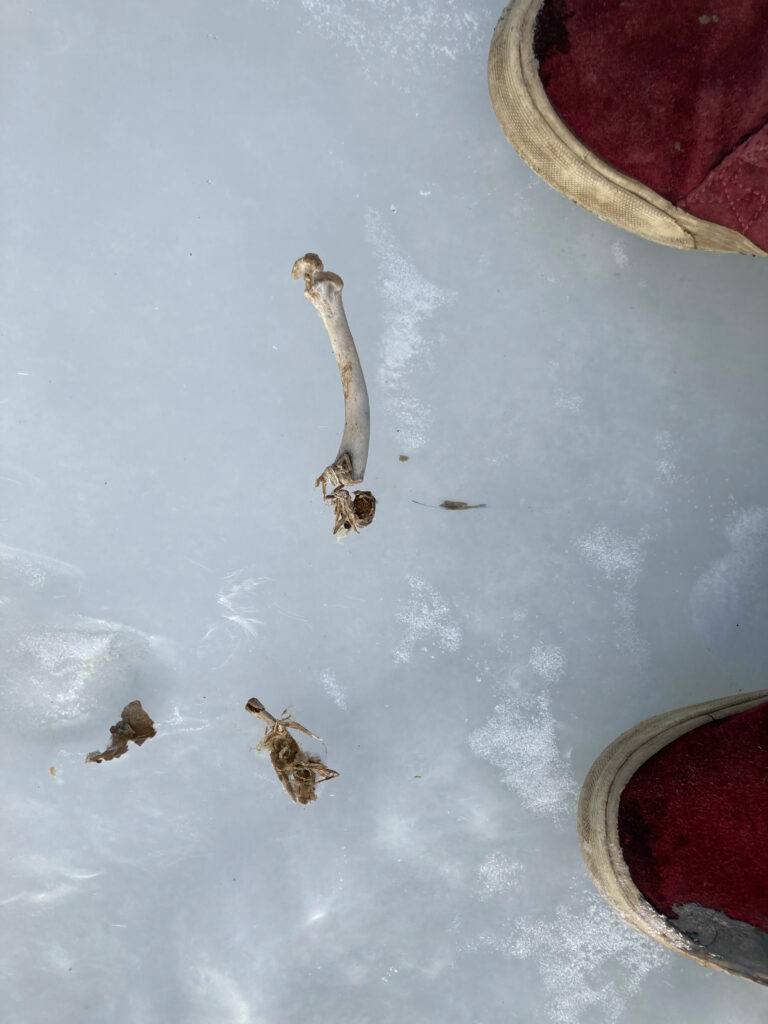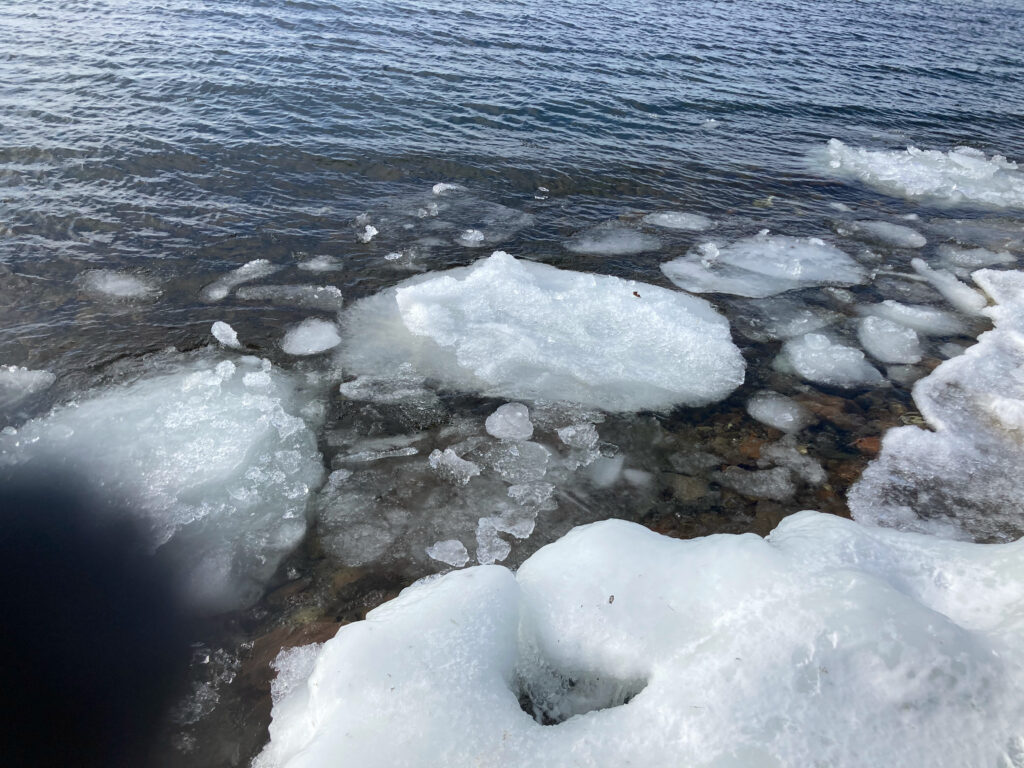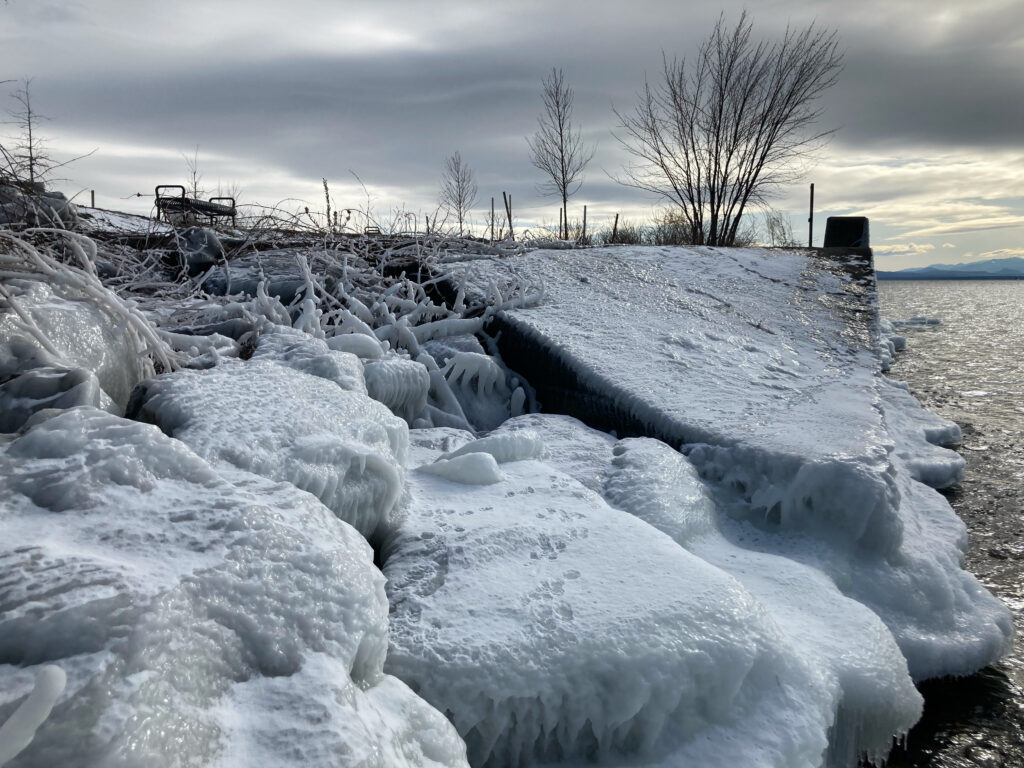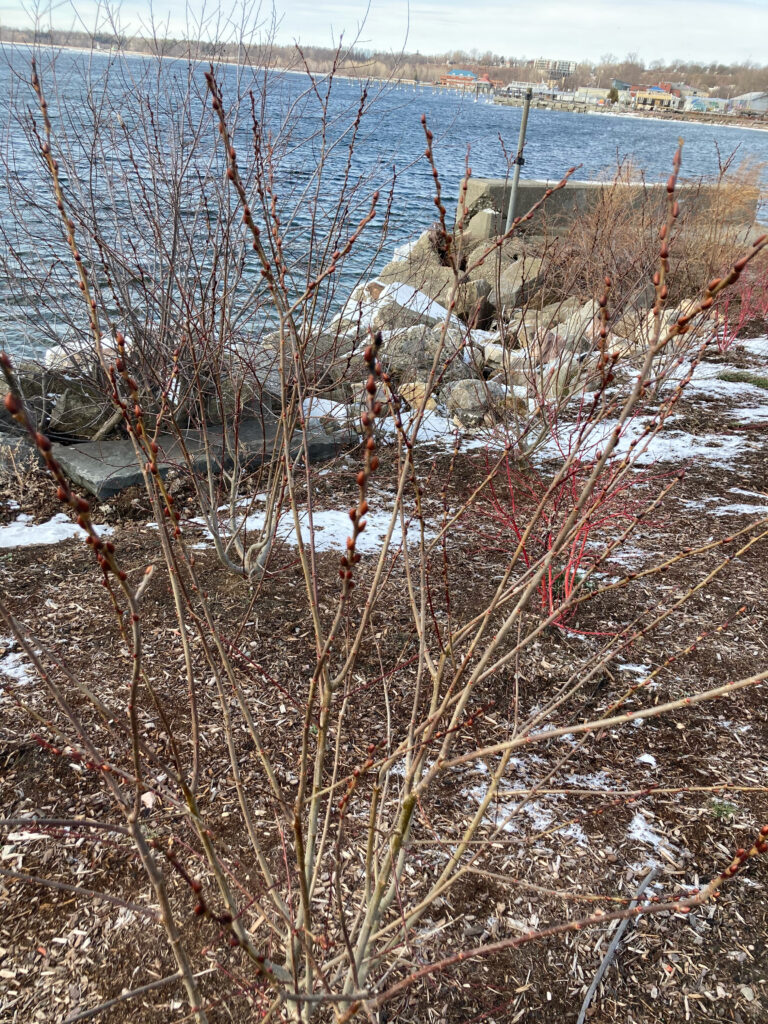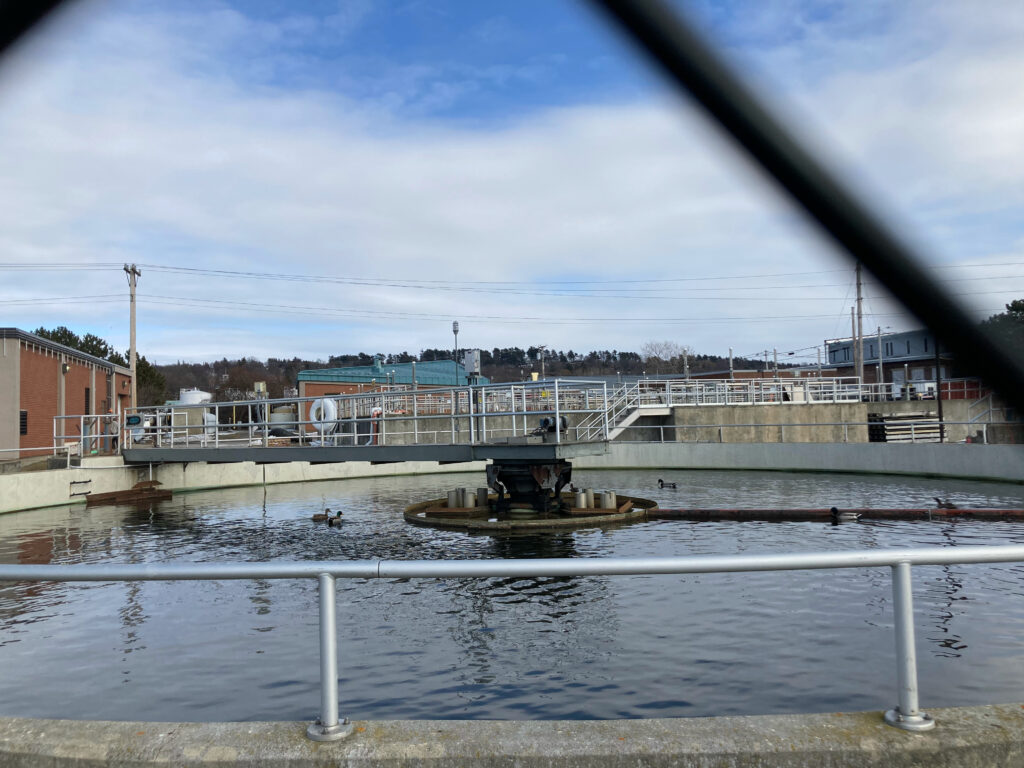This week I walked through Burlington with two friends to observe the phenological changes taking place in the city in early March. Walking across Waterman Green, I noticed that the snow seemed to have melted under the trees before melting elsewhere. This could have been because of heat generated by the trees, or because there is less snow under them to begin with since their branches block it as it falls, or perhaps the branches above these patches of ground have an insulating effect. Across the street we saw a tree with an unusual structure – its branches were thin and twisty, and swept uniformly upwards. Its leaves hint that it is a White Oak, so I wonder if its branch formation is a result of unusual pruning.
Unusual tree One of its leaves
As we made our way downtown I spotted some ornamental shrubs, which appeared to be of the Cedar family. There was far less snow at City Hall Park than there had been at Waterman Green; this could be a result of more aggressive snow-clearing, an urban heat-island effect, or a result of more a temperate climate due to its lower elevation and proximity to the lake.
Shrubs Snow (or lack thereof) at City Hall Park
Near the waterfront we encountered several paper birch trees, and the elevated deck we were on afforded us a close-up view of their seeds and buds (which had not yet begun to open).
Birch trees from above Seeds and buds
We encountered a tree we were unable to identify on a steep hillside off of the road. I had never seen a similar bark texture before, and I wonder if it was a result of exposure to pollution from cars or if this was its natural appearance.
Unidentified tree with unusual bark
We walked across some docks grouped together for the winter in the marina. The undisturbed snow on the ice revealed several sets of tracks. We identified two distinct types: those that appeared to belong to a small raccoon, and five-toed tracks that appeared to belong to a member of the weasel family. We saw what we thought was scat on one of the docks, but its dry flaky texture suggested that it may have simply been dried seaweed and crushed clam shells.
Weasel-esque prints Weasel-esque prints with hand for scale
Possible scat Small raccoon prints, with hand for scale
The view from the docks
Continuing past the docks, we arrived at a small park. Here, a mural on the side of a maintenance shed reminded me of new urbanist approaches to creating a sense of place. We saw a stand of Red Pines, which retained their needles and seemed to have sheltered the ground below them from snowfall.
A mural A stand of Red Pines
We walked along the ice on the shore of the lake, and encountered similar animal tracks to the weasel-esque ones we had seen by the docks. We saw a small animal bone as well (possibly the remnants of the weasel’s meal), and beautiful ice formations.
Prints (weasel?) Animal bone, with feet for scale
Ice at the edge of the lake Ice formations along the shore
We continued on the bike path that ran parallel to the shoreline, and saw several ducks swimming in a pool in the wastewater treatment facility, which struck me as an interesting subversion of human development for natural uses. Several mulch beds on the side of the trail were host to newly planted trees, though I was unable to identify them.
Saplings More saplings (the formation of buds reminds me of sumac)
“In a time of universal development, swimming is a revolutionary act” – George Orwell or something
